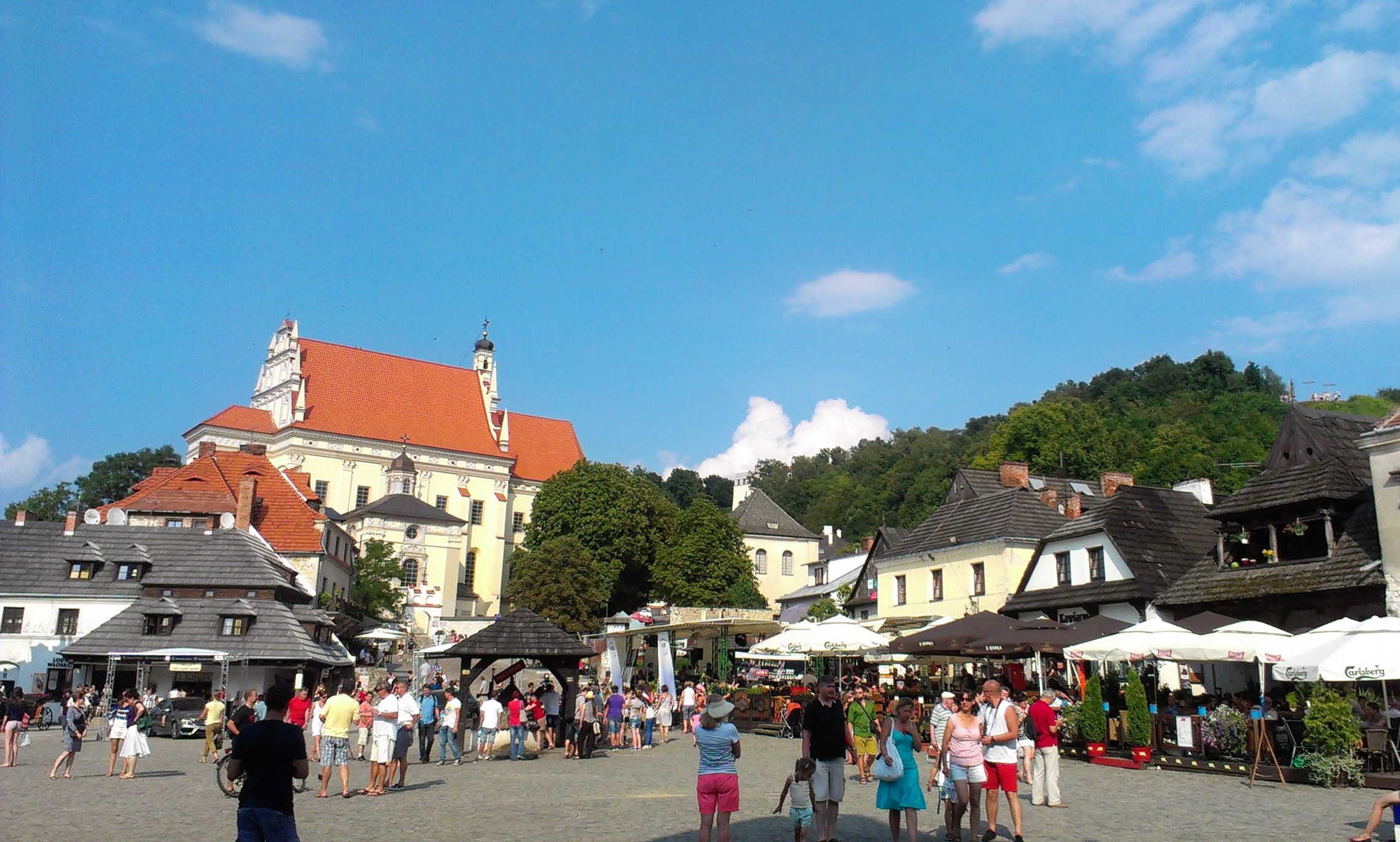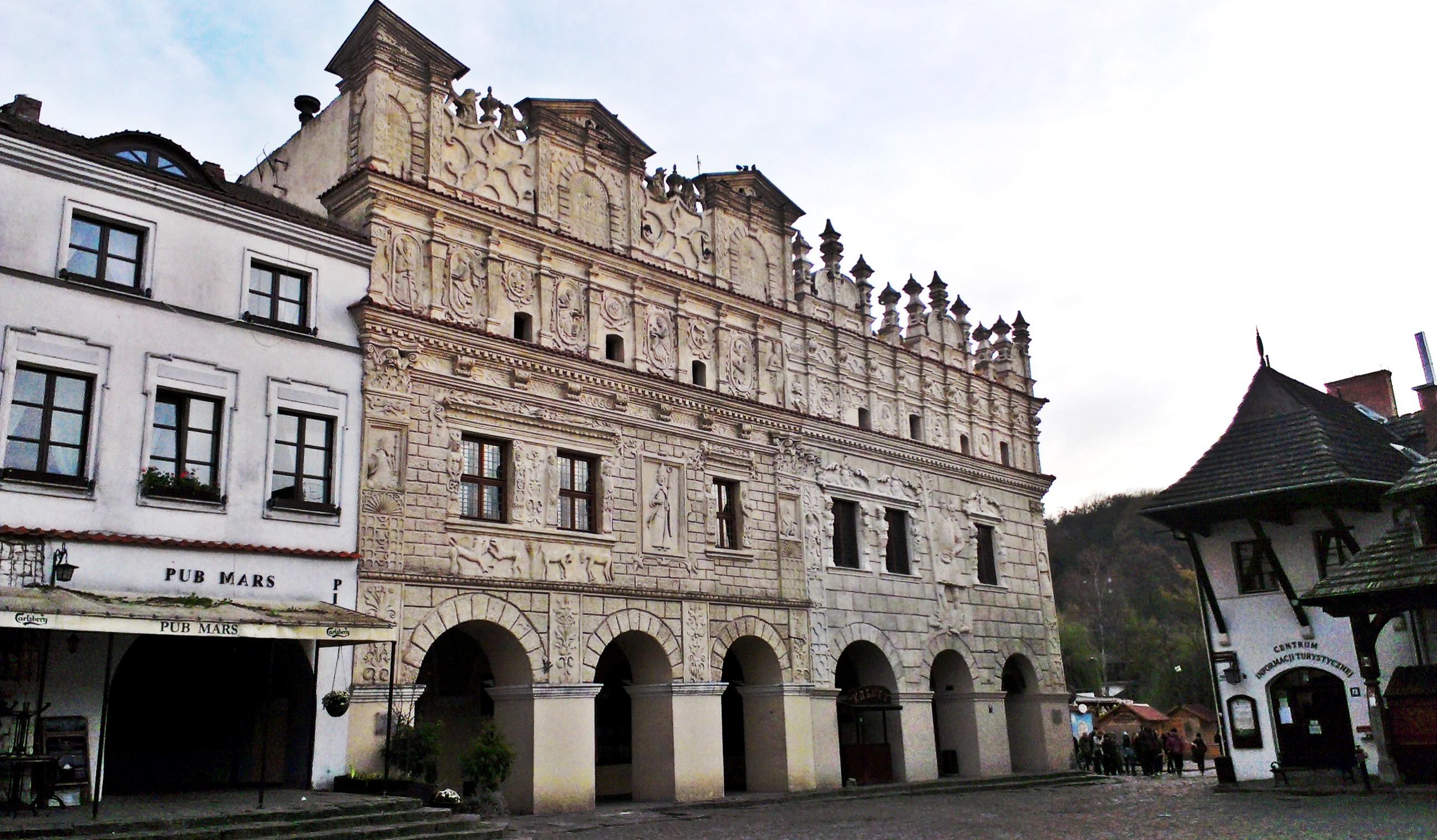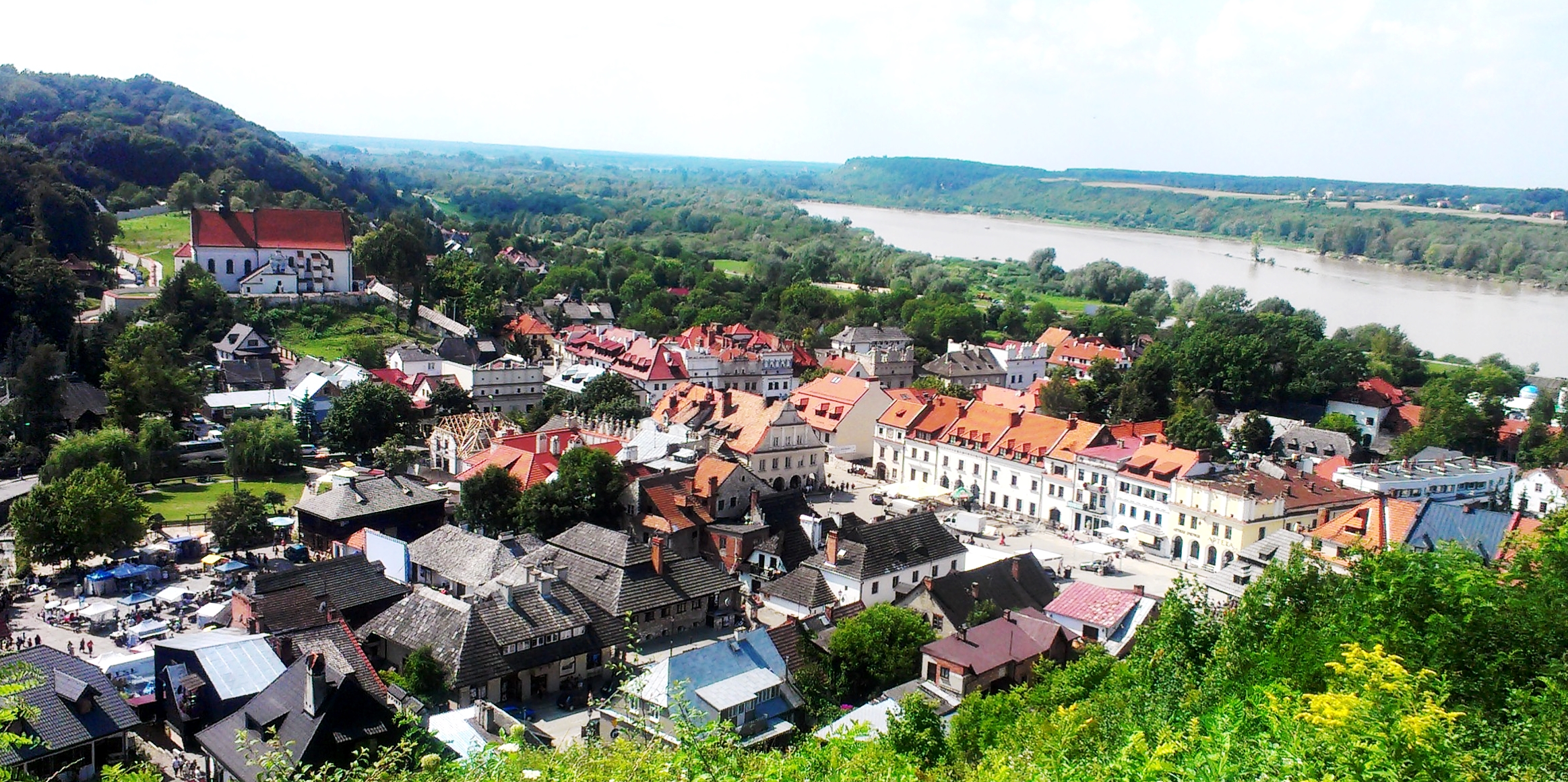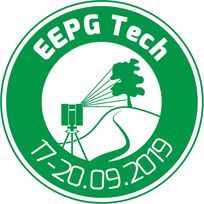The village Wietrzna Góra (Windy Hill in Polish) has been (together with neighbouring hamlets) granted to the Norbertine nuns from Zwierzyniec near Kraków in the 12th century. It is believed the nuns, in honour of the benefactor, prince Kazimierz the Just, changed the village name to Kazimierz. The town privileges were received from another Kazimierz – king Kazimierz the Great.
As early as in the 15th century Kazimierz became an important inland port and another royal privileges granted were conductive to its development. From the 16th to the first half of the 17th century Kazimierz was a leading commercial cereal trading centre, with a big port and several granaries. The trade was an origin of wealth of merchant families of Przybyło, Celej, Czarnota, Górski and others. The relics of their power and of Kazimierz importance are renaissance townhouses as well as churches, built or rebuilt in that time (parish, monastery and hospital church).
The age of prosperity came to an end with the Swedish invasion. The town importance diminished with the loss of Vistula river crossing rights and natural changes to the river bed also, separating communication line from the town. The final disaster came with the 3rd partition of Poland (1795). Under the Russian occupation Kazimierz lost municipal rights (1869), regaining it again in the independent Poland, in 1927.
Since the end of 19th century, Kazimierz has been turning into a fashionable tourist destination and being an artistic colony in the interwar Poland even increased its popularity.
The Second World War brought the destruction to the town. The rebuilt process included both modernization and development. The main author of the post-war landscape of Kazimierz was an architect Kazimierz Siciński. In the second half of the 20th century Kazimierz became tourist hot-spot and mecca of artist, mainly painters, but also novelists and folk-artists. Modern Kazimierz is a small (less than 5.000 inhabitants) but busy town, surrounded by the quiet and impressive nature of Vistula river and Nałęczów Plateau with its labyrinth of loess gullies.
Kazimierz is the monument of history thanks to its urban layout, but it has many valuable monuments of architecture as well. The main attractions are listed below.
- Parish church of St. John the Baptist and St. Bartholomew dates back to 14th century, but the renaissance (“Lublin renaissance” variation of the style) look is the effect of after-fire rebuilding in 1561. The church has richly decorated vault, the impressive part of the interior forms three chapels – the northern, the Royal and the Górski family, with rich in- and outside decoration. It also has pipe organs with larch casing.
- Sanctuary and church of the Annunciation to St. Mary with Franciscans monastery, built in the 17th and rebuilt in the mid-18th century. The main part of the interior forms the rococo altar with a painting of St. Mary (1600). The complex is walled with interesting roofed staircase leading up the church.
- The hospital buildings serving as a local culture centre now. The part of the complex was a nearby small church of St. Anna (second half of the 17th century), resembling a parish church in form.
- The 14th century castle, built by Kazimierz the Great. It has been destroyed through ages and, after the Second World War, preserved in a form of ruins. There is an older, defensive tower above the castle, probably a relic of former complex.
- Beautiful, renaissance townhouses of wealthy citizens located in the city centre. The Market Square shines with Mikołaj and Krzysztof Przybyło houses, richly decorated, with reliefs of saint patrons, impressive attics and arcades. The other fine example is Celejów townhouse at Senatorska Street, with attics and interesting portal.
- Granaries, being witnesses to past economic power of the town. They face Vistula, now being shifted away. There are two main groups of these functional yet sometimes beautifully decorated buildings – one north of the Market Square (including Przybyło granary, with picturesque attic) and one south, at Krakowska Street. Only a dozen of about 60 granaries are preserved.
- Other building and objects including bath-house (c. 1920), wells, 18th century synagogue and 20th century villas.

Kazimierz Dolny Market Square

Przybyłos townhouses

Kazimierz Dolny Panoramic View










